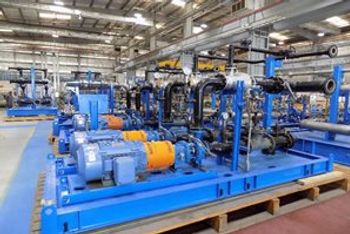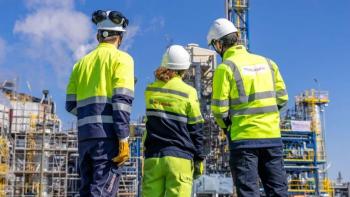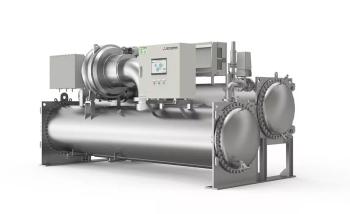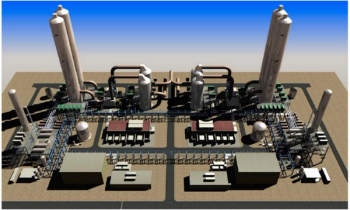After I recently gave a presentation at a conference about field performance testing for centrifugal compressors, a (distinguished) audience member raised the question of why anyone in their right mind would conduct a site performance test for contractual performance verification when perfectly equipped factory test facilities are available. Initially, I thought this question was intended to trick me, but after some further reflection, I realized that the person was serious and persistent in their opinion. This actually serves as a perfect topic for dissemination and discussion in the Myth Buster series.
Key Takeaways
- Eni’s first long-term LNG contract with a U.S. supplier marks a pivotal step in transatlantic energy cooperation.
- CP2 LNG secures 13.5 MTPA in sales, pushing Venture Global’s total contracted capacity to 43.5 MTPA.
- With federal approvals in hand, Venture Global begins site work on CP2, aiming to start LNG deliveries in 2027.
The purpose of an aerodynamic performance test, such as ASME PTC-10, is to verify the thermodynamic performance capabilities of a compressor. This includes assessing its efficiency, power consumption, operating range, and its ability to create a fixed head at a specific flow. However, all widely recognized compressor performance test codes (including ASME PTC-10 and ISO 5389) are aerodynamic test codes, and these codes do not provide guidance for rotor-dynamic or any mechanical stability tests and standards. The test results can be used to create thermodynamic baseline data for compressor operation, whether to determine changes in performance during operation or to optimize the machine’s integration into the overall process. Additionally, they can be used to verify contractual commitments. However, based on the test code, they do not provide guidance on the machine’s mechanical function, which is usually covered separately in the API 617 mechanical run test but can be combined with ASME PTC-10 for a full load string test.
On the other hand, the argument is often made that a compressor station does not provide the flexibility required to conduct a valid field performance test. While the flexibility in a factory test cell may indeed be greater, the machine onsite is tested with the actual gas composition and the piping arrangement it operates with. Although not all compressor stations meet the instrumentation quality, quantity, or location specifications of a performance test code like ASME PTC 10, this may not necessarily disqualify a site performance test. The accuracy of the test for contractual purposes should be determined by a rigorous uncertainty analysis, which should adequately assess whether the field instrumentation provides the necessary fidelity.
Many end users view a factory performance test as an insurance policy to prevent performance issues that may be detected only after the machine is installed. This concern is certainly valid, but in today’s world, experienced compressor manufacturers rarely fail tests, especially if the application falls well within the manufacturer’s expertise. In certain cases, problems do not arise from aerodynamic performance but from rotordynamic performance— exactly the area not typically verified in standard factory aerodynamic tests unless a significantly more expensive factory test at site operating conditions (ASME PTC 10 Type 1 or full-load string test) is performed. These conditions can often be more easily and cost-effectively replicated in a site performance test.
Of course, if problems occur, they are often easier to remedy in a factory setting than onsite, especially if the site is remote or offshore, or if the machine is very large and heavy. The logistics of removing and shipping parts, e.g., a bundle, can be challenging. Therefore, lost time may be a factor to consider. However, the potential to lose time due to site problems must be balanced with the certainty of the additional time required for a factory test. Additionally, consideration should be given to the time needed to build or modify parts, which applies regardless of the test’s location.
The cost of the test is significantly higher for a factory test compared to a site test by at least an order of magnitude. The reason is that a factory test requires the machine to be fully installed and commissioned at the factory, which is a costly process. This is true even if temporary instrumentation must be installed onsite, such as instrumented spool pieces. Similarly, conducting a factory test takes a considerable amount of time, often several months. One significant issue in field testing is that not all sites permit freely adjusting the compressor operating conditions to the desired contractual values, or, if they do, they cannot accommodate the required duration of steady-state operating conditions. This challenge can often be mitigated by utilizing existing recycle loops or by adjusting other machines on-site.
Lastly, performance verification often pertains to the performance of the entire train. This can be expressed through requirements that specify the fuel or electricity consumption needed to operate under certain conditions, defined by isentropic head and mass flow. Another question is whether the train has enough power (at specified ambient conditions) to operate at a given operating condition (again specified by isentropic head and mass flow, and thus power). Many tests are most conveniently performed onsite, with the contract driver, and ideally, operating conditions for the compressor should be as close as possible to the contractual ones.
The intent of this text is not to convince end users to conduct factory tests, but rather to outline that in certain situations, a site performance test might be a worthwhile addition and sometimes an even more appropriate method for verifying contractual conditions. As a baseline for condition monitoring and plant optimization, field test data, assuming it is accurate enough, is certainly preferable to factory test data. While a factory test offers significant assurance that the machine will operate without issues in the field, it does not necessarily provide greater confidence in the actual machine’s efficiency and power requirements. Lastly, the argument for site tests would be considerably weaker if centrifugal compressors frequently failed performance tests. However, due to the design practices and accumulated knowledge of established manufacturers, a compressor very rarely fails a performance test.
Klaus Brun is the Director of R&D at Ebara Elliott Energy. He is also the past Chair of the Board of Directors of the ASME International Gas Turbine Institute and the IGTI Oil & Gas Applications Committee.
Rainer Kurz is a recent retiree as Manager of Gas Compressor Engineering at Solar Turbines Inc. in San Diego, CA. He is an ASME Fellow and has published over 200 articles and papers in the turbomachinery field.






